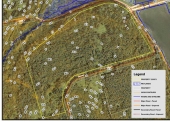
 4
4









 seems to have lots of sub-tropical and tropical gardeners...
seems to have lots of sub-tropical and tropical gardeners...Paul Cereghino- Ecosystem Guild
Maritime Temperate Coniferous Rainforest - Mild Wet Winter, Dry Summer
 2
2




 My husband and I plan to work in this area on a reforestation project.
My husband and I plan to work in this area on a reforestation project. 2
2









 2
2




Paul Cereghino- Ecosystem Guild
Maritime Temperate Coniferous Rainforest - Mild Wet Winter, Dry Summer




 3
3
















 1
1




Iterations are fine, we don't have to be perfect
My 2nd Location:Florida HardinessZone:10 AHS:10 GDD:8500 Rainfall:2in/mth winter, 8in/mth summer, Soil:Sand pH8 Flat




S Bengi wrote:
You want a nitrogen fixer/legume, this should be 90% at establishment and then culled/dieback to 25% at maturity
Still able to dream.















Part Bee wrote:why wouldn’t wood chip and tropical soil don’t go well together.
Iterations are fine, we don't have to be perfect
My 2nd Location:Florida HardinessZone:10 AHS:10 GDD:8500 Rainfall:2in/mth winter, 8in/mth summer, Soil:Sand pH8 Flat

|
When I was younger I felt like a man trapped inside a woman's body. Then I was born. My twin is a tiny ad:
The new purple deck of permaculture playing cards
https://www.kickstarter.com/projects/paulwheaton/garden-cards
|




